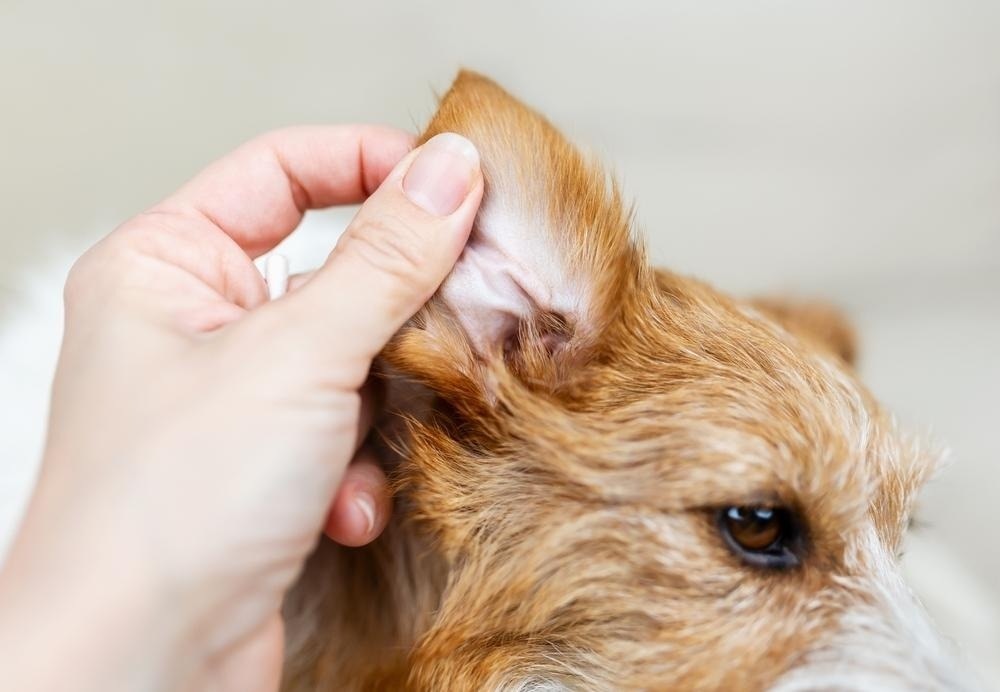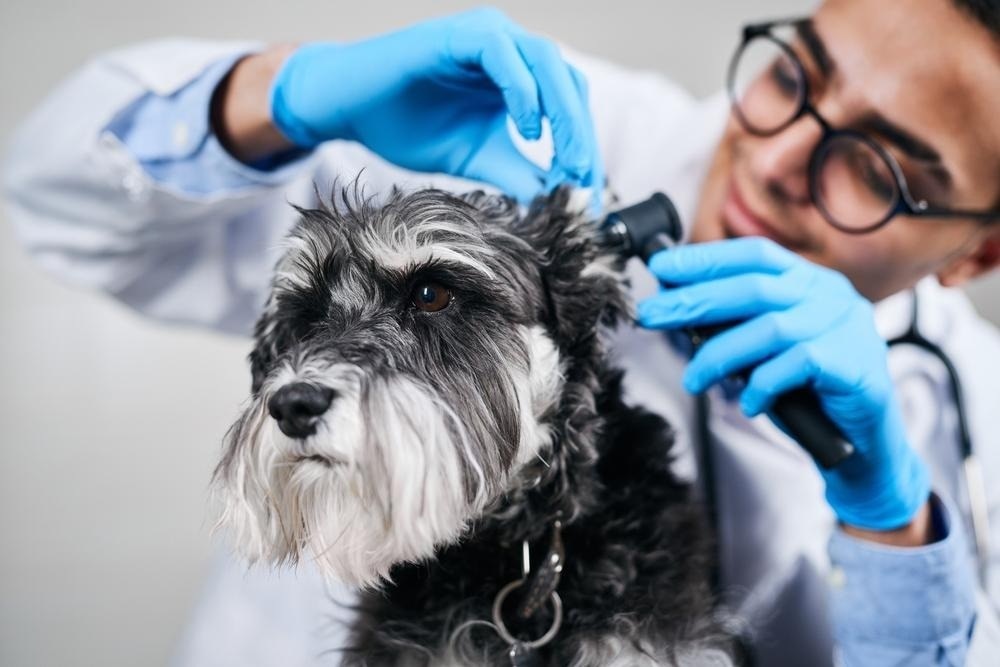

"Dog ear mites" is a common term that many pet parents are familiar with, but recognizing them is a different matter. Since many conditions can cause inflamed, itchy ears, it's important to recognize what makes this parasite unique, and how diagnosis and treatment differ from problems like ticks, fleas, and even allergies. Let's explore what ear mites are, how to identify them and how to help your dog get rid of these tiny parasites.
What Are Dog Ear Mites?
Ear mites are highly contagious, tiny parasites called Otodectes cynotis. This microscopic mite, which is technically considered part of the arachnid class, lives on the surface of the skin and ear canal and can just barely be seen by the naked eye, appearing as pin-prick-sized white dots.
Signs of Dog Ear Mites
Ear mites are extremely uncomfortable for dogs, which is something no pet parent wants their pet to experience. By knowing what to look out for, you may be able to expedite the diagnosis and prevent the infestation from getting worse. If you notice anything unusual about your dog's ears, it's always best to contact your veterinarian.
Common signs of ear mites in dogs include:
- Extreme itchiness, especially around the ears, head or face
- Scratching or rubbing ears
- Wounds on scabs on the ears, head or face
- Shaking head
- Redness of the ear
- Thick dark-brown to black debris in the ear canal

Ear Mites or Ear Infection?
Many of the signs that are common with ear mites are also seen with other ear conditions, such as a yeast or bacterial infection. So how can you tell the difference? Ultimately, the best way is to have your vet provide an accurate diagnosis. However, there are some differences that may indicate one or the other.
Yeast infections may include more greasy, yellow discharge, as well as a pungent odor (many pet parents liken the smell to corn chips). Bacterial infections may have a rotten-smelling, yellow to green ear discharge. In some rare instances, all three organisms (ear mites, yeast and bacteria) could be present in the ear. In these dogs, the yeast and bacterial infections usually develop secondary to the inflammation and debris in the ear from dog ear mites, creating a prime environment for yeast and bacterial overgrowth.
Causes of Dog Ear Mites
Ear mites occur most commonly in young animals and are transmitted by direct physical contact with other infested animals. This could be another dog or cat in the home, from social activities outside the home, or in some cases, from close contact with infested wildlife, like foxes. Since ear mites are highly contagious among dogs and cats, all animals in the home should be treated (at the direction of your vet), even if they are not showing overt symptoms.
How Are Ear Mites Diagnosed?
Your vet will be able to diagnose ear mites by doing an otoscopic ear exam. This allows them to look deeper inside the ear. They will also typically look at a sample of the ear discharge under a microscope to confirm the reason for your dog's discomfort.
Because signs of ear mites are so similar to other conditions in dogs, it's important to receive an accurate diagnosis from your vet, rather than trying to treat it at home based on signs alone.
Ear Mite Treatment for Dogs
There are many treatment options for dog ear mites, including medications that can be applied directly in the ears, as well as others that are injected, taken orally or topically to the skin. Fortunately, many of these prescribed medications can eradicate dog ear mite infestations with just one application. The bonus? These medications are commonly utilized as routine flea and tick control too, so you get the added benefit of prevention from other common parasites.
A thorough ear cleaning is still necessary to remove the wax and debris from the ear at the start of treatment. In some cases, your dog may need an additional ear cleaning about one month after receiving the treatment to remove any remaining debris.
And remember: all animals in the home should be treated under the guidance of your vet, even if they are asymptomatic.

Tips for Preventing Ear Mites in Dogs
Regularly checking your dog's ears can be a simple and effective way to get ahead of any ear mite infestations. Look for ear debris, discharge or redness, and pay attention to any excessive itching or head shaking that your pup shows.
If you believe your dog may have ear mites, it's best to contact your vet. Early intervention can make a big difference in your dog's comfort, and a professional opinion is essential for getting an accurate diagnosis.
FAQs
What's the difference between dog ear mites and earwax?
Just like people, dogs naturally have some earwax, which is yellowish and varies in texture. Ear mites are tiny white parasites, and often come with a dark debris.
What do ear mites look like?
Mites are microscopic arachnids that resemble the appearance of ticks. They are barely visible to the naked eye as pin-prick-sized white dots.
How long does it take for ear mites to go away?
There are several medications available that your vet can prescribe to treat ear mites with a single-dose administration. The ears need to be cleaned at the time of treatment and may need to be cleaned about a month after treatment to completely clear the ear debris.
Can humans get ear mites from dogs?
In some rare cases, humans have been reported to develop a transient skin rash following close contact with affected animals. However, it's extremely unlikely for dogs to pass ear mites to humans.
Can ear mites infest your house?
Ear mites are spread via direct contact from one infested animal to another and do not survive well off of the host, so there's no need to be concerned about your home being infested. However, since it is highly contagious with close physical contact, your vet may recommend washing or replacing shared bedding material.
Are ear mites contagious to other dogs?
Yes, dog ear mites are highly contagious among dogs (and cats) and are spread by direct physical contact.
How do you check for ear mites in dogs?
Being aware of the signs that come with ear mites can be helpful in knowing when to visit the vet. Your vet will be able to do a thorough ear exam and evaluate ear debris under a microscope to develop an accurate diagnosis.
From Itchy Ears to Happy Tails
Ear mites can be uncomfortable for your dog and stressful for you, but with the right care and attention, they're highly treatable. By recognizing the signs early, following your veterinarian's guidance and keeping up with regular ear checks, you can help your dog stay itch-free and happy.






















